With a fully fuelled Whittley 2380 as his trusty steed, The Captain shares his best tips for cruising and camping. The Destination? Myall Lakes on the NSW Mid-North Coast.
When it comes to touring, a wise man once said, “The more you know, the less you’ll take.” This is terra nullus for Captain’s crewman Trav, who treats every boating overnighter like a WWII amphibious landing party. Having said that, when it comes to camping on board or cruising the coastline, The Captain has picked up a few tips in his travels. For demonstration purposes, we’ve commandeered a Whittley CR 2380 to put it all into practice on the Myall Lakes.
LOCATION, LOCATION
Sounds obvious, yeah? You’d be surprised how many times we’ve camped overnight in an unknown location. Up at Cape York, we couldn’t find our rendezvous point, so spent the night bobbing at sea on the anchor. The moral of the story? Do your research prior to leaving port — and have a bloody good anchor in case it all turns to custard.
Make sure your boat has plenty of 12-volt chargers for your phone, because it’s your number-one camping tool. Google Earth is awesome for finding camping grounds. Navionics is great for locating that sheltered reef or island when you’re off the coast. And the Windy app or BOM will help you stay out of the breeze — the beauty of these two is they will give you the weather forecast at an exact destination, not a general area.
PLANNING & NAVIGATING
The key to coastal cruising is having a good plan — and good navigation. There are plenty of aids such as plotters, iPads, mobile phones and books on coastal cruising. Many old-school skippers still prefer paper charts, for the simple reason that you get a bigger perspective. Being able to see your entire cruising area on one chart gives you an idea of the actual distances between your destinations — and any obstacles in your way. Calculate distances, allowing for weather and currents.
Have a Plan B destination in case the passage becomes too uncomfortable and you need to seek shelter. Your alternate destination should be easy to enter in rough conditions and, er, sheltered. Plotting a course is the easy part, but calculating the weather and sea conditions is a bit more difficult. Before setting off each morning, check the weather forecast and the tides. Stay connected to the latest forecasts.
ALL THE GEAR
There are a few things you’ll need over and above a day trip. Like bedding — dry bedding. There’s nothing worse than a wet swag, so waterproofing is essential. Use bedding that’s light but warm, and doesn’t take up too much space. If travelling with a swag, invest in a waterproof bag. The two great killers of a camping trip are shit food and shit sleep. Take it from The Captain, there’s nothing worse than a wet swag after a rugged day on the helm.
Food is another useful item for, er, staying alive. Packing the right food is a good start, but storing it the right way is a must. If, like The Captain, you’re too povo to afford a boat with a fridge, then you’re probably running eskies. To optimise esky performance, cool it down before packing, fill it with your goodies plus ice, then seal. Pack your perishables and soft foods in snaplock containers to keep the moisture out. And avoid opening and closing the esky too much.
FAVOURITE FOODS
As a general rule, eat your perishable items first and catch or collect as much fresh seafood as you can. If there’s more than one boat, make each boat self-sufficient.
When you’re on the water, it’s not always easy to share resources, and the more remote you are, the more tense relationships will be if one crew doesn’t pull their weight with basic gear like food, ice, plastic bags, water, bandaids and beer. Especially beer.
This basic shopping list can have you master cheffing a range of different meals. All you need to do is catch a bit of fresh seafood and you’ll have a diverse menu every night.
POWER
Ok, let’s be honest. Unless you’re a sea-going Harry Butler (Captain’s note: Harry had a nature TV show called In the Wild back in the ’70s and was pretty handy in the bush) it’s hard to be fully off the grid. We need those watts for charging phones, cameras and laptops. Batteries also come in handy for things like starting the bloody boat. So make sure you’re not using more power than your vessel has got. Does it have a monitor or cut-off switch to avoid completely draining the battery juice?
Ideally, you’ve got a spare battery, wired properly so that it won’t be killed by you playing Creedence Clearwater tunes long into the night. A spare power pack will also come in handy. Boat lighting — like deck lights and under-gunwale LEDs — are awesome for keeping the party pumping. But they do suck some serious juice, so make sure you carry independent light sources, such as head torches, in case your voltage gets low.
GOOD COMMUNICATIONS
A radio provides a direct line of communication with other vessels and shore-based Coast Guard and Marine Rescue stations. These organisations are also excellent sources of information about local weather and sea conditions, as well as information on any coastal bars you may need to navigate. If you’re two or more nautical miles offshore, you’ll also need to carry an up-to-date (according to manufacturer’s expiry date) EPIRB (emergency position indicating radio beacon) rated at 406MHz and registered with AMSA. You must also carry an operational marine radio. Check your local authority guidelines. And if you’re travelling long distances offshore or into super-remote waters, a SatPhone is definitely a worthwhile investment.
PACK PROPERLY
Be sure to pack properly so you can actually access the shit that you need when you want it. Prioritise the stuff you need around easily accessible areas. Pay attention to weight distribution and avoid loading one side with all your eskies or fuel. And tie it down. Be mindful that if you’re loading your boat and trailer, you’re probably creeping toward your gross vehicle mass. Under the extra load, axles, tyres, bearings and even gearboxes on tow vehicles will fail. We know. We’ve done ’em all!
ANCHORING, DOCKING & BEACHING
If you set your anchor correctly and with confidence, you won’t have to rely on moorings and marinas when cruising the coast. A well-set anchor also means you can leave your boat to go ashore, safe in the knowledge the anchor will not drag. The first step to anchoring is to ensure you have the right ground tackle and it’s in good working condition. Anchors work more effectively with the stock holding horizontally. Chain is your best friend — if you have enough out, it’ll drive the anchor deeper into the seafloor, rather than pulling it out.
The second step is to check the location: What is the quality of the holding ground like? How fast is the tide or current expected to run? A rule of thumb is that one knot of current is equal in effect to about 10–15 knots of wind. Is it sheltered from the weather? Wind and swell are common causes of anchors dragging. The worse the conditions, the more rope and chain you’ll need to pay out. Is there enough swinging room when the tide or weather changes? Is there enough water depth when the tide drops? And if you plan on rafting up with your buddies boat, think fenders, fenders and more fenders — especially if you’re leaving them overnight.
SAFETY GEAR
Obviously, safety gear is bloody important — as are things like tools and spare parts.
Essential items to check off before heading to sea include: Anchor and chain/line to suit vessel size/weight and sea floor Bailer/bucket/fire bucket with lanyard Bilge pump(s) — manual or poweroperated for vessels with covered bilges or closed underfloor compartments (other than airtight void). We actually run dual bilges in most of our boats, on separate systems. Yes, The Captain’s cat has four of ’em! The reason? Seems they’re prone to failing on remote trips — perhaps it’s the Spanish mackerel blood all over the deck or even the snipped cable ties that have a habit of blocking the fans on the bilge.
Yep, we’ve done both of those. Compass Distress flare — orange smoke, handheld (in-date) Distress flare — Red, hand-held (in-date) Fire extinguisher(s) — for vessels with electric start, electric motors, battery, gas or fuel stoves Map/chart for area of operation (paper or electronic) Paddles or oars and rowlocks — in vessels under 6m unless a second means of propulsion is fitted Sound signal — air horn/whistle/bell V sheet — minimum dimensions 1.8m x 1.2m Water suitable for drinking — 2L per person Waterproof torch — floating and operational Appropriate spares, hoses and clamps Tools Manuals for motors and equipment Spare anchor and ground tackle Note: This is not an exhaustive list. Equipment requirements vary so check with your state marine authority.
THE BARE NECESSITIES
So, by now you should have a full belly and be snuggled up in your warm and dry bed aboard your extremely safe boat, rocking gently and securely at anchor. But wait. Do you have the following essentials? These items are all too often left off the overnight trip list: Insect repellent Spare batteries Head torches — so you can still use your hands. Dry towels Plastic bags Toilet paper Tunes — it’s amazing how handy portable speakers are. They can travel to the beach or campsite with you, and don’t drain the main battery.
WHITTLEY 2380
So, how did the 2380 perform as a touring weapon? The Whittley is literally built for live-aboard adventures. At 7.6m long with a 2.44m beam, the 2380 has enough room for the entire fam — or you could just get cosy with six of your best mates. Speaking of cosy, the 2380 is an absolute gin palace, with seating galore. A large L-shaped lounge runs along the stern and up the starboard side. This converts into a double bed. Up in the lockable cabin is a super-boujee love nest. Apart from beds, storage is one of the most important parts of overnight adventures and the 2380 has ample room in her belly for all your bits and pieces, with nooks and crannies underneath every cushion.
She carries 210L of fuel, which gives you a reasonable range with the economical Yamaha 150HP. We’d love to try this hull with a 200HP or 250HP donk, though. She’d shoot out of the hole much quicker — especially loaded with passengers and gear. The 100L freshwater tank eliminates the need to carry and store 300 tiny plastic water bottles.
There’s also a variable deadrise hull that’s 20 degrees at the transom. This gives you a smooth ride when the going gets choppy and a stable platform when you’re chilling on anchor.
The CR 2380 is as comfortable, as she is versatile. Over the course of the trip, we explored every corner of the Myall Lakes — fishing, wakeboarding, barbecuing and sleeping aboard this baby — and she lapped up every minute.
SUPPLIED BY
Whittley Marine Group
12-14 Somerton Park Drive, Campbellfield, Victoria.
(03) 8339 1800
whittleymarinegroup.com.au







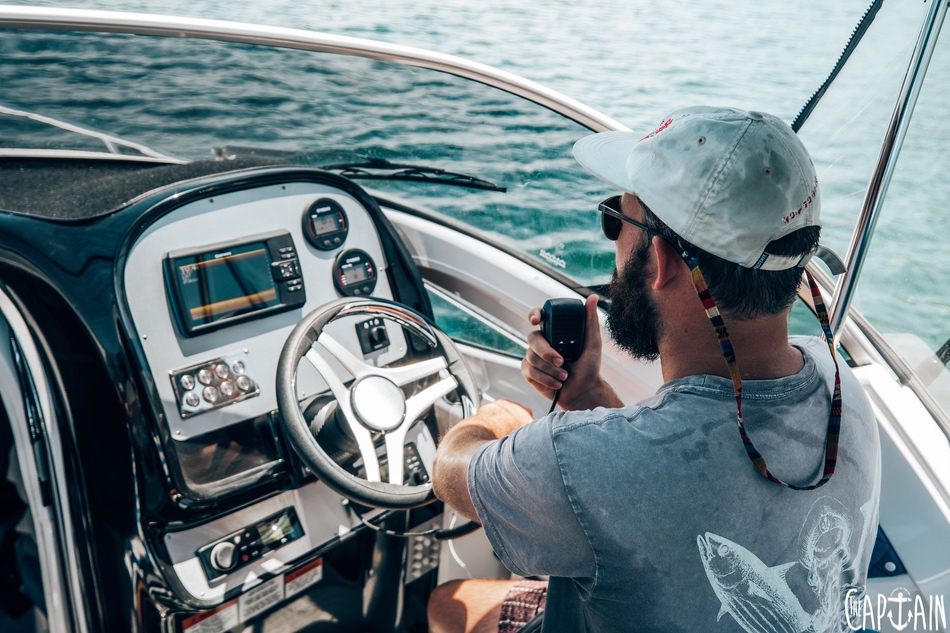






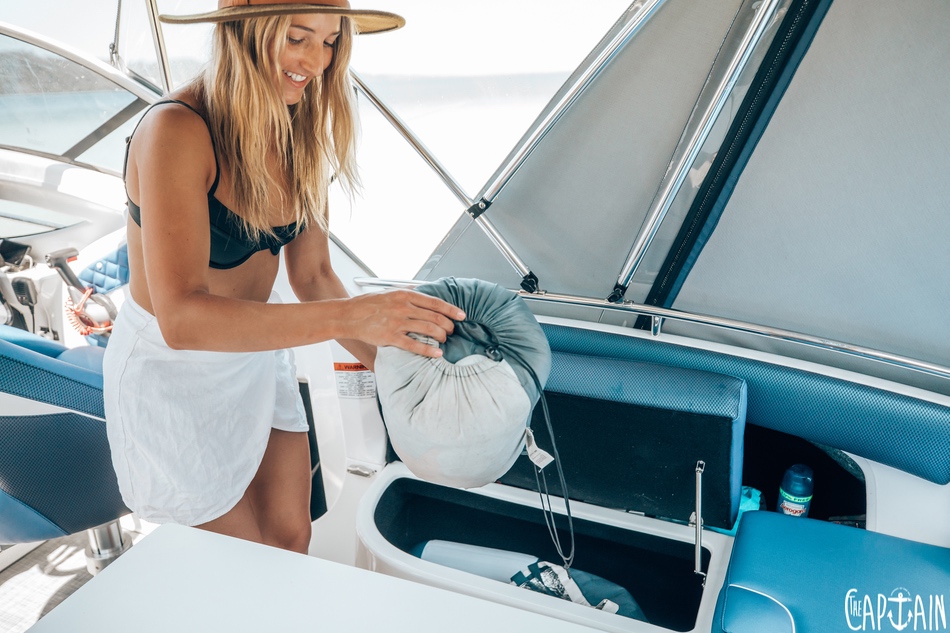












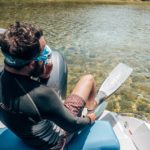













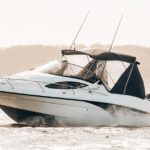





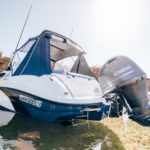




















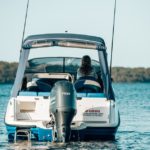



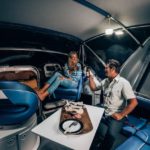






Recent Comments